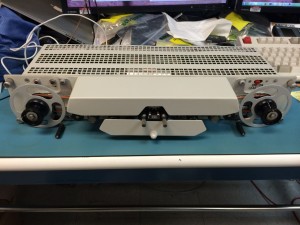
I just bought this punched paper tape reader through eBay, just because it looks neat. It was made by Chalco Engineering Corporation, and the accompanying paperwork indicates that it was part of the AN/TPN-19 radar system. It appears to have been overhauled and then packed up for use as a spare. I didn’t find any technical details about it online, but to my amazement I found an original manual for this series of tape readers in another eBay listing! The manual doesn’t cover all of the details of this particular model, but it should be very helpful anyway. When I get around to it, I’ll scan the manual so it can be archived online somewhere.
I was surprised by how heavy this unit is. The two capstan motors and two transformers have a lot of iron in them. According to the manual, this unit should have a parallel data output interface and a fairly simple set of control signal inputs. Much like tape readers used in a lot of old NC and CNC machine tools, this reader has a reel-to-reel tape handler that allows it to rewind a tape and then re-read it under external control. The unit also has a pair of manual tape motion buttons which allow the operator to position the tape to a specific character when the unit is jumpered properly.
So far, I’ve built a power cord for the unit using an Amphenol connector part number PT06E-12-3S(SR) that I ordered from Digi-Key for $27. Heck, that’s a quarter of what I paid for the whole reader, but I was too impatient to wait until I managed to scrounge a cut-off MIL-DTL-26482 series connector with the matching 12-3 insert. I’ve powered it up and verified that it can spin the capstans without emitting smoke, but I’ll need to kludge together some sort of interface to do much more with it. I discovered that the ground lead of the power input connector was used for input filtering but was not connected to the chassis, so I corrected that before applying power.
It has a loose guide pin that I’ll need to fix, and the left pinch roller doesn’t release all the way. I don’t think that either will be too hard to fix. I’ll also need to fabricate replacements for the missing tape reels, that would click into place on the hubs. I think it normally runs from left to right. The ventilated top and bottom covers pop right off. The cover over the top of the tape path is held on with magnets, and also pops right off. The other cover underneath the tape path is secured with a banana-plug-like pin, and it holds a pair of spare bulbs and covers a pair of spare capstan rollers.
The reels are belt-driven by the two independent capstan rollers. Tension-sensing arms rotate the reels on their eccentric hub mounts in order to release belt tension and let the belts slip when the tape is tight. There’s also a pair of limit switches in the tension-sensing arms. Each capstan has a solenoid-operated pinch roller, and there’s also a solenoid-operated tape brake on each side of the read head. In operation, the reader can move the tape a character at a time or zip through the tape quickly based on the control inputs, so a connected device can start and stop the tape depending on how quickly it can accept data.
I haven’t decided what to do with this reader yet. Maybe I should build an interface so I can use it with my PDP-8/M project as a high-speed tape reader? I don’t really need to build an interface to my modern laptop since I have a punch/reader with an RS-232 serial interface on the way from another eBay purchase. I’d welcome any suggestions about fun, practical, and/or amusing uses for this reader.
I’m also curious about how it was used in its original application. Was it used to load computer code? Or IFF data? Or operating parameters? Or some other sort of data? If anybody out there knows about the AN/TPN-19 and can provide any interesting unclassified details, please comment below or email me.
- As It Arrived
- Paperwork
- Front View
- Covers Pop Off Easily
- Dataplate
- Delicate Connectors Damaged
- Adjustable Tape Guides
- Bottom View
- Capstan Motor Tag
- Other Capstan Motor Tag
- Rear of Power Input Connector
- Loose Pin
- Belt Markings
- Spare Capstan Rollers
- Operating Capstan Rollers
- In Its Natural Environment
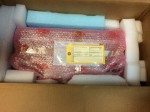
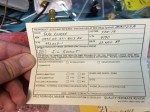
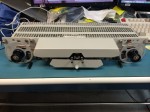
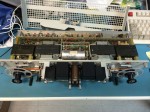
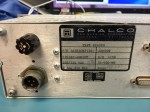
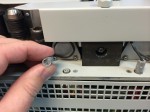
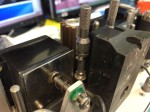
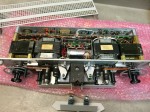
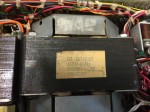
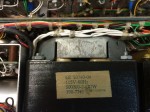
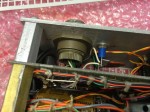
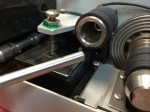
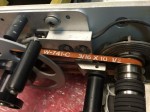
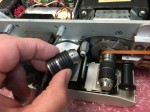
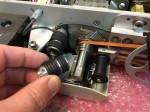

I stumbled on your pictures on the internet and they brought back memories. I checked out those punched tape readers in the TPN-25 PAR radar system at the Sacramento Air Force Logistics Center on McClellan AFB from 1985-1996. I was involved in the replacement of the radar computer and with it the tape reader went bye bye. The name on the paperwork was Joe Knight. He was an older guy and he collected aircraft engines.
Thanks for sharing!
Used on the GPN-22 and TPN-25 to read 8 bit tape and stored it on a 64K core memory. Back then 1982-1986, 64K core memory weighed about 60lbs.
Barry Snow
Just got hold of one of these. Curious if you did anything more with yours. Any chance I could get a scan of the manual?
Paul
Hi! I haven’t done anything with mine yet. Scanning the manual is on my to-do list, but it’s been there for a while. When I finally get around to it, I’ll be happy to share a copy.
Thanks for responding. If it would help, I’d be glad to scan it and mail it back to you. I figured at least I should offer it; I understand if you don’t want to do that.
Paul
W2TTY
Sorry, I don’t want to send it anywhere.
Wow, this brings back memories! I worked on the TPN-19 back in the early 80’s in the MOB. Yes, the paper reader was used to load software into the computer.
The picture “In Its Natural Environment” shows the computer and computer power supply directly below the tape reader. This computer used a magnetic core memory module for RAM. I think it was something like 1000 bytes total. The standard operational software ran the beam steering algorithm. The antenna was static, but could be physically pointed in a couple of directions to support different runways. Once in place, scanning was done by a bunch of phase-shifter modules which are between the feed horn and the reflector.
We occasionally loaded diagnostic programs. Each program was on a separate tape reel. Also, all of those lights on the computer front panel are actually indicator/buttons. There are separate rows for different registers. Each light represents a bit, and there are buttons for load and step/increment the program counter.
I don’t know what the clock speed is, but you could see all of those lights pulsing as the program ran so it must have been in the kHz range.
Thank you so much for sharing your memories of using the TPN-19!
The post from Mike Moore made me realize I should ask again if you ever had a chance to do anything more with yours or scan that manual. I tried for a bit but never got mine working. I did find that it does not fit in my rack.
I am so sorry that I never got around to scanning the manual. I’m going to have to try to remember where I stashed my scanner tomorrow so that I can finally scan it for you, and for anybody else who might ever need to know about this reader.